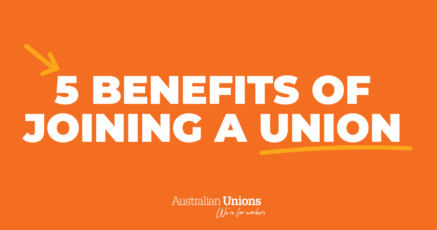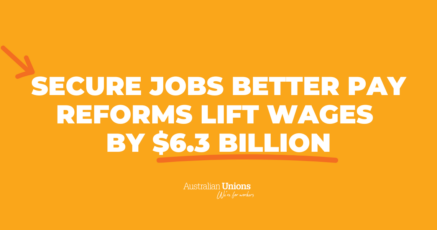Last week, the Australian Bureau of Statistics published their employment and wage price index for the June quarter, which presented a complex image of the nation’s economy at the start of the latest Delta wave.
In response, Treasurer Josh Frydenberg was quick to cherry-pick the most flattering parts of the data, emphasising that unemployment was measured at 4.6%, the lowest rate in 12 years. He noted that the rate had been projected to rise and that the fact that this had not occurred would “normally” be a cause for “celebration”. That statement, made as an aside, indicates a way of thinking about the economy focused on quick wins according to conventions and norms which do not necessarily apply in the present. To emphasise that single metric in isolation misreads its significance, and to strip it from the context necessary to understand how it reflects trends in the economy more broadly.
As presented in the ABS data, the unemployment rate does not include those who are technically employed, but worked zero hours. Technically, those workers are “in employment” despite being unable to work, and unable to earn. The Guardian’s Greg Jericho has recalculated the rate including those workers, and has found that rather than falling, when including workers involuntarily on zero hours, the unemployment rate rose sharply from 5% in May, to 6.8% in July. In NSW, Jericho calculates this at 9.8%. Meanwhile, the ABS data reported an increase in the underemployment rate. Taken together, this data provides a more meaningful picture of who is out of work, and points to how the expansion of precarious work is not always captured in conventional economic analysis.
One other area of concern in the ABS data, conveniently not acknowledged by Frydenberg, is the ongoing impact of stagnant wage growth. The ABS noted that the Wage Price Index had risen 0.4% in the last quarter, taking the annual rate to 1.7%. Alongside this data, the ABS released seasonally adjusted data for November 2020 to May 2021, which measured the WPI at 1.5%.
The ABS described this rate as being similar to before the pandemic; yet this is itself a massive problem. From the 1980s onwards, wage growth in Australia has trailed behind the per capita growth of GDP, and this has only escalated over the past decade. Between 2012 and 2017, wages decelerated at an unprecedented rate, leading to the Governor of the RBA describing the situation in 2017 as a “crisis… in real wage growth”. Since 2015, wage growth has averaged under 2%, and has effectively stagnated. The problems of wage depression are also unequally distributed, following along the fault lines of inequality and making their impact more severe. The Workplace Gender Equality Agency has noted that viewing the data over the past six months, men in full-time positions were twice as likely to experience any increase to their earnings.
The ideological refusal to address this issue has caused significant damage, as positive wage growth policies are not only being avoided, but wage growth is actively being constrained. The decision to oppose significant increases to minimum wages was made on the basis of claiming that wage increase would threaten economic recovery; yet given that profits have vastly increased during the pandemic, and that increasing incomes for those on the lowest income levels demonstrably buoyed the Australian economy throughout late 2020, such claims cannot be borne out by the evidence at hand. These decisions to hold back minimum wage also impact the punitive, brutal JobSeeker rate. In February this year, JobSeeker was forced back to only “41.2% of the minimum wage”, despite the entire economy temporarily seeing the massive benefits of raising the rate to above the poverty line late last year. Elsewhere, the pay freeze on public sector workers is entirely a product of political choice; while money can always be found to subsidise fossil fuel corporations, the Morrison government has claimed there is not enough money to pay its own public servants. These decisions were identified in February slowing the process of economic recovery overall, and yet the government continues to hold these positions in defiance of reality.
To pick out a single figure and claim that it would “normally” be reason to celebrate, indicates more magical thinking than economic analysis by Frydenberg. The idea of a “normal” economy being conjured here suggests some belief in a default setting which can be brought back, which is both unreasonable and unhelpful. Even if it could be brought back, the same structural inequalities that build instability and weakness into the economy would come with it. That old “normal” is one which is gone, and as the process of recovery goes on, attending to the complexities of the present is crucial to understanding how the economy is functioning, and who it is leaving behind.
In other news
This week marked the 55th anniversary of the Gurindjii Strike, also known as the Wave Hill walk-off. The Australian Trade Union Institute has put together a video commemorating the strike, while Aidan Ricketts wrote for The Conversation about the strike as an example of one of Australia’s most effective protests.
Earlier this week the federal government announced a well-overdue relief package for childcare providers in hotspot areas. As Peter Hurley and Hannah Matthews write, however, this does not go far enough to cover the costs of safe care for those who need it, and to ensure providers can continue to meet those needs.
The impact of the pandemic on Australian universities has been projected to lead to a decade-long decline in a recent analysis. One of Australia’s largest export industries, higher education was excluded from JobKeeper leading to thousands of job losses, and the research funding system has continued to narrow, with the dwindling federal funding system becoming deliberately more complex and exclusive.
While the Federal Government drags its feet, the US Climate Chief has drily commented that “it’d be really helpful “ if Australia were to contribute its share to global climate targets. Closer to home, modelling has found sound evidence that going harder and faster to reach net zero emissions will strengthen, not weaken, Australia’s economy.






SHARE:
Unstable work and wages: a product of political will